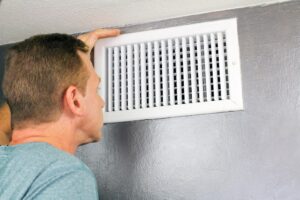Replacing the HVAC system in your home is a major investment. To ensure you get the full benefit of a new equipment purchase in terms of increased comfort, energy efficiency and cost savings, you need a dependable source of information to help compare different models. One of the most accessible and reliable sources of comparison data available is the EnergyGuide label.
EnergyGuide Label Basics
The Federal Trade Commission (FTC) requires that the manufacturer places EnergyGuide labels on certain types of energy-consuming appliances and HVAC equipment. Since 2013, manufacturers also have to make their products’ EnergyGuide data available online as well. These bright yellow EnergyGuide stickers are quite noticeable on new major appliances like clothes washers, dishwashers, freezers and refrigerators. They’re also found on furnaces, heat pumps, boilers, water heaters, central air conditioner and window units.
Where Does EnergyGuide Label Information Come From?
In January, 2014, the FTC introduced a new EnergyGuide label design with yellow text on a black background that includes data from updated efficiency tests. The energy efficiency testing for EnergyGuide labeling is based on average national electricity costs and equipment run times, which are updated every five years. You’ll likely see a mixture of old and new labels until all the products on the market have been retested with the new efficiency metric.
How to Use the EnergyGuide Label
EnergyGuide labels offers a wealth of comparison data that can help you choose the right HVAC equipment for your needs. The exact details displayed on a label will vary depending on the type of equipment you’re looking at, but here’s a general overview of what’s included: When you’re comparing the EnergyGuide data on different makes and models of HVAC equipment, keep in mind that these energy ratings and expected consumption are simply estimates. Installation quality and the condition of your home’s ductwork will have a significant impact on the actual yearly operating costs and your comfort level. Learn more about Sullivan Oil & Propane’s solutions for choosing an efficient new HVAC system using the EnergyGuide label, or contact us today at 610-365-1268.



